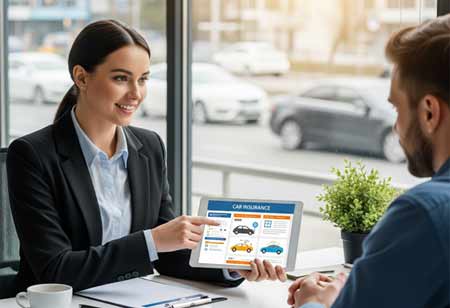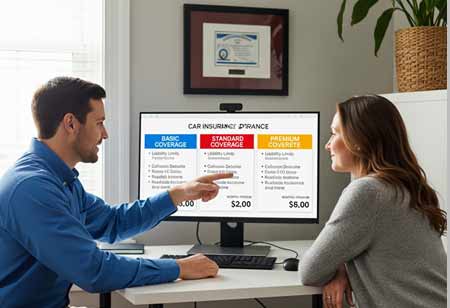Thank you for Subscribing to Insurance Business Review Weekly Brief
- Home
- Sections
- Claim Adjusting
- Credit Insurance
- Cyber Insurance
- Expat Insurance Agency
- Health Insurance
- Insurance Agency Management
- Insurance Broker
- Insurance Consulting
- Insurance Risk Management
- Liability Insurance
- MGA
- Reinsurance
- Specialty Insurance
- Third Party Administartor
- Travel Insurance
- Underwriting
- Worker Compensation
- News
- CXO Insights
- Vendor Viewpoint
- Magazine
- Conferences
- Subscribe
- About Us
- CXO Awards
-
Mobility as a Service: Rethinking Car Insurance in a Shared Economy
Urban transportation is shifting from ownership to access, impacting personal auto insurance as risk assessment evolves towards usage-based, personalized, and embedded coverage models.

By
Insurance Business Review | Tuesday, November 18, 2025
Stay ahead of the industry with exclusive feature stories on the top companies, expert insights and the latest news delivered straight to your inbox. Subscribe today.
Urban life’s rhythm is shifting as personal transportation moves from ownership to a model defined by access and utility. This evolution, encapsulated in the concept of Mobility as a Service (MaaS), is not merely altering how people travel through cities; it is creating powerful ripple effects across ancillary industries. None is more profoundly impacted than the personal auto insurance sector, which for a century has been anchored to the static concept of a single driver and their privately owned vehicle. The rise of an on-demand and multi-modal transportation ecosystem is compelling a complete reimagining of how risk is assessed, priced, and covered in the modern urban landscape.
Car ownership is losing appeal among urban youth as its high costs increasingly pale in comparison to the convenience and affordability of on-demand mobility alternatives. This evolving consumer mindset, prioritizing practicality and experience over possession, is steadily eroding the foundation of the personal auto insurance market. The traditional annual policy, crafted around a specific vehicle and its primary user, becomes increasingly irrelevant in a world where a fluid combination of services meets an individual’s transportation needs. As personal car ownership declines, so too does the demand for the insurance products intrinsically linked to it. The industry is thus faced with a pivotal transition: moving from insuring a stationary asset to safeguarding a person in motion.
Navigating the Multi-Modal Maze
The contemporary urban commute is a portrait of variety. A city dweller might start their day on an e-scooter to the nearest transit station, take a train across town, and then use a ride-hailing service for the final leg of their journey. The following day could involve a short-term car-sharing rental for errands or a bike-share for a quick trip. This multi-modal reality fundamentally fractures the traditional risk equation. The risk profile is no longer singular and predictable; it is fragmented and context-dependent.
A person’s risk exposure changes dramatically as they move between these different modes of transport. The liability associated with riding a shared bicycle is vastly different from that of operating a shared car for an hour or being a passenger in a chauffeured vehicle. The conventional, one-size-fits-all insurance policy is ill-equipped to handle this complexity. It cannot seamlessly adapt to the fluctuating risk exposures of an individual who, in effect, is a different type of traveler multiple times within the same week, or even the same day. This creates a clear and pressing need for a new insurance architecture—one that is as flexible and on-demand as the mobility services it is designed to protect.
The Dawn of Usage-Based and Personalized Coverage
In response to this, the insurance industry is undergoing a profound transformation, shifting away from broad statistical averages and toward more precise, individualized risk assessments. The future of auto insurance is not about the car; it’s about the journey. This has given rise to models often referred to as usage-based insurance (UBI), which align the cost of coverage directly with actual driving behavior and exposure.
At the heart of this evolution is a torrent of data, generated by the very technologies that power the shared mobility revolution. Telematics, leveraging the ubiquitous smartphone and in-vehicle sensors, can provide a granular understanding of when, where, how far, and how safely a person drives. This data enables the creation of highly personalized insurance products. Imagine coverage that is priced per mile or per minute, activated only when a user gets behind the wheel of a shared vehicle. This model provides a more equitable and accurate way to price risk, ensuring that individuals pay for insurance based on their actual usage rather than a fixed annual premium determined by demographic proxies.
This data-driven approach enables the "unbundling" of traditional insurance policies. Instead of a comprehensive package, coverage can be offered in discrete, contextual slices. The risk of a specific trip—from point A to point B, in a particular vehicle, at a specific time of day—can be assessed and priced in near real-time. This level of precision was unimaginable a decade ago and is now becoming the central pillar upon which the new edifice of mobility insurance is being built.
The Embedded Insurance Experience
The logical endpoint of this trajectory is the concept of embedded insurance, where coverage is no longer a separate product that a consumer must actively seek out. Still, it is instead a seamless, invisible component of the mobility service itself. When an individual books a car-sharing vehicle for a two-hour window, the necessary insurance is automatically integrated into the transaction. There are no separate forms to fill out, no calls to an agent—the protection is simply part of the service.
This model offers a sophisticated solution to the complexities of the multimodal ecosystem. It ensures that appropriate coverage is in place for every journey, regardless of the mode of transport, without placing an undue burden on the consumer. For the mobility platform, it provides a way to manage risk across its user base and fleet, while for the user, it delivers peace of mind and ultimate convenience. This integration represents a symbiotic relationship where insurance becomes an enabler of mobility, facilitating trust and safety within the shared economy.
The personal transportation landscape is undergoing a significant transformation, fundamentally altering the nature of risk. The automotive insurance industry is at a pivotal juncture, transitioning from a vehicle-centric product model to a customer-centric paradigm focused on comprehensive mobility solutions. Through strategic data utilization, enhanced flexibility, and seamless integration within the evolving transportation ecosystem, insurers are not merely reacting to change but actively influencing the future of personal mobility. This proactive approach ensures that protective measures evolve in tandem with journeys.
More in News






